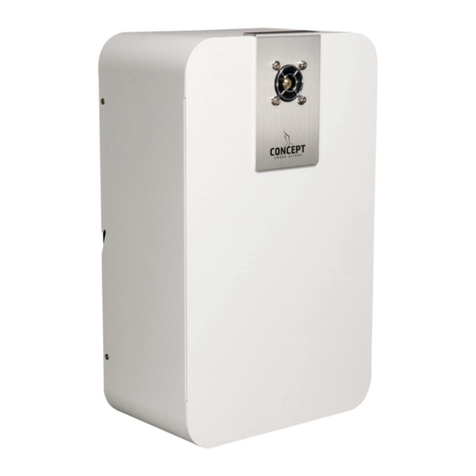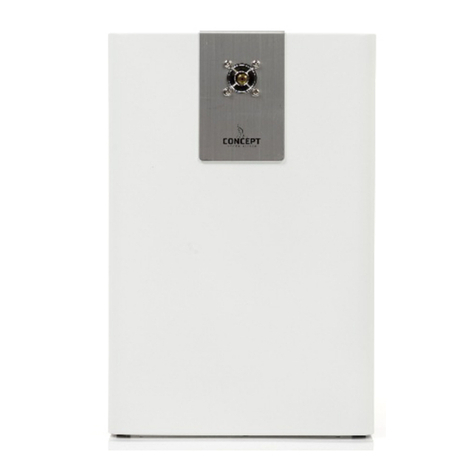
Page 7of 16
Suspension mounting
Suspending the Smoke Screen range is achieved using the ‘Suspension Kit’ comprising a length of
Uni-strut, two sections of threaded bar and fixings (1). Prepare the Smoke Screen by fitting the
angle brackets as described above. Fix the required length of M8 threaded bar to the wall bracket
using 4 x nuts and 4 x 25mm washers (5). Fix the uni-strut into place. There are a range of fixings
to accommodate concrete ceiling, girders etc; if in doubt contact the fixing supplier. Attach the
threaded bar to the uni-strut using the channel nuts, 38mm washers and M8 nuts (6). Once this is
done the Smoke Screen can be lifted into position and the set screws tightened as above (4). Any
final adjustments to height can be made at this stage as the nuts and the threaded bar will take the
weight of the Smoke Screen. The final assembly, viewed ‘through the ceiling’ is in photo (7).
NOZZLE CHANGING
To change the nozzle, first remove the front cover then
remove, and replace, the nozzle using a 12mm ring spanner.
Always use a new copper washer, which may need dressing
slightly to seat an angled nozzle in the correct orientation.
The Smoke Screen is delivered with a single-hole straight
nozzle and the following are also available –2-hole
horizontal, 3-hole horizontal, 1-hole 30 deg angle down and
2-hole 30 deg angle down.
CONTROLLING THE SMOKE
Inputs. There are 3 setsof input connections on the Smoke Screen (Alarm Set,Trigger and Hold Off)
that should be connected to clean contacts. For theSmoke Screen to produce ‘smoke’ all 3 sets of
connections must be ‘open circuit’ (this can be changed to ‘closed’ – see “Invert Trigger Mode” in the
Programming section). If one set of connections is ‘closed circuit’ then the Smoke Screen is prevented
from producing smoke. Hence the production of smoke is controlled using one or a combination of the
following:
Alarm Set –a normally closed relay connected across the Alarm Panel ‘Set’ connections, which
open when the Alarm Panel is ‘Set’ and closing when the panel is ‘Unset’.
Trigger –a normally closed relay connected across the Alarm Panel ‘Trigger’ or ‘Intruder’
connections, which open when the Alarm Panel is in ‘alarm’.
Hold-off –usually a PIR or movement sensor connected to the ‘Hold-off PIR’ connections (N/C),
which opens when the sensor sees movement.
Additional Hold-off –any form of N/C relay or micro switch can beconnected to the ‘Hold-off’
connections. Where fitted in addition to the Hold-off PIR both sets of relays must be ‘open’ to
produce ‘smoke’.
Outputs. Clean contact outputs are provided for connection to the Alarm Panel for ‘Status Output’,
‘Liquid Status’, ‘Battery Output’, ‘Tamper Status’ and ‘Verification Output’. See the notes on the
“Generic Connection Diagram” for the function of these outputs.
WARNING
This operation is usually carried out
during installation. If the Smoke Screen
has been in service the nozzles will be
extremely hot and will cause injury if
touched. Therefore, the Smoke Screen
should be switched off and time should
be allowed for the nozzles to cool.






























